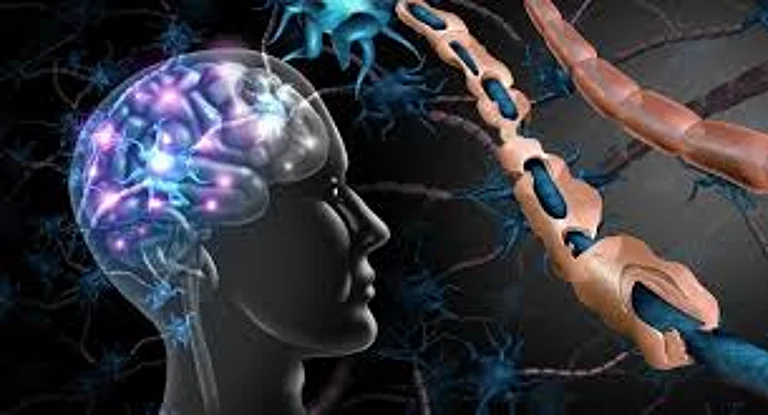Every core element in entrepreneurship is about making the best use of all factors available. In a fast-paced world populated with technology, that is the reason why companies strive to be effective. Today, for a company like Meta the challenge is to utilize infrastructure properly while avoiding exceeding capacity limits. Entering this challenge was Siddhant Benadikar, who worked in distributed systems with Meta during a time when the company was acquiring new capacity and traffic demands were mounting but no new capacity was allocated for the year. It was in such an environment where transformation of the existing strategies became a necessity owing to Siddhant’s concern for the operational targets of the Meta Company.
Transforming Platform Productivity: Optimisation Dynamics
Siddhant impressively showcased his leadership when he took the lead in a very strategic project intended to re-engineer the performance of Meta’s platforms and at the same time reduce utilization. The problem solution was that Meta had to cope with the same performance of workloads under similar conditions of infrastructure availability, which allowed for the growing trends of system usage, efficiently serving its purpose. This was not an easy task when considering the size of Meta and the overwhelming amount of traffic that its infrastructure supports every day. One of the most impactful aspects in this case was the improvement of the K-nearest neighbor (KNN) search algorithm and its application to Meta’s FAISS library. This algorithm is part of several systems for data retrieval and recommendation employed within the wide ecosystem of Meta.
The team of Siddhant made substantial upgrades in memory optimizing techniques and FASS integration and as a result, they managed to increase the KNN searches runtime efficiency by 15 times over its previous performance. This waste amount was not only a fast and efficient way of accessing data but also cut resource use by 40%. Such an accomplishment however meant that the same amount of data processing by meta’s platforms took place with over 60% less computational resources, which meant more capacity available to repurpose for other important system-enhancing programs.
Beyond the optimization activities of KNN and FAISS, Siddhant also took active responsibility for the political aspect and integrated the platform into Meta’s quota management system. Such integration was necessary for curtailing resource allocation abuse, ensuring that every user of the system got their due portion of it according to the quota they had purchased. Focusing on efficiency and rational distribution of resources turned out relevant also for the optimization of particular user pipelines, in the processes of which Siddhant was able to implement some changes that made the data processing cycles more effective by eliminating unnecessary steps.
The $20 Million Impact: Efficiency and Cost Savings
All these development efforts had a compounding effect. In these facts, under Siddhant, the Meta company had approximately $20 million in savings added to the capital expenditure (CapEx). Reducing the required resource footprint to accommodate increasing traffic demands is where Siddhant’s project empowered Meta to stay within its capacity limits, even where the user traffic continued to increase. This project didn’t just solve immediate capacity issues – it laid the foundation for future improvements in efficiency as well as controllable growth in capacity.
However, the full integration with the quota management system, specifically, was important in making sure that the system does not cause an overload and that Meta is always able to honor the service level agreements (SLA) with its internal business units. Thanks to introducing such capabilities as automated supervision and rational resource allocation within a specified time, the team led by Siddhant managed to avoid congestion and guaranteed that critical applications were always provided with sufficient computing resources.
This project, probably, highlights strong technical knowledge and the out-of-the-box thinking from Siddhant. His capacity to spearhead efficiency strategies in a high-performance distributed system was not only a quick fix to the pressing issues that had been experienced at Meta but was also a step toward the enhancement of resource management concepts at Meta. Siddhant showed that optimization in terms of meeting commercial objectives is possible without delay in performance through the use of a blend of algorithms, memory management skills, and integration styles.
Beyond Optimization: Establishing the Cornerstones for Future Runway Expansion
As successful as the resource optimization project turned out to be, its effects were not only limited to the quick wins in terms of efficiency and cost reduction. Siddhant’s efforts succeeded in raising the bar of how such projects were undertaken at Meta within resource constraints. By decreasing reliance on additional infrastructure, the project also allowed Meta to reallocate resources towards other most critical projects within the company and hence advance its overall strategic goals.
Enhancing the Technology Results: Scalable Integration of a Compute TPL with Heterogeneous Accelerator Clients. Lending entity computing industries recently supported this initiative granting the company’s growth inconsistency within a critical market image. Certainly, incarceration or In such prospect, we prognosticate augmentations of scale currently delineated in the data and to similar bifurcated systems. The optimizations that Sith carried out have been adopted in the other architectures of META enabling different teams to achieve the KNN and FAISS progress in other data-heavy devices at the same time. This interchange of ideas between different units and the application of the best concepts regarding the technology layers has enhanced the connectivity and the effectiveness of the technology stack allowing META to grow in the future.
From Aspirations to Achievements: siddhant's Journey in Distributed Systems
Siddhant’s rise to assuming the position of a resource optimization expert at Meta shows his furrow of innovation and problem-solving capability. At first, he wanted to join a medical course, but since he loved how technology works and how complex problems are solved, he decided to change to computer science. He obtained several degrees in computer science, emphasizing the areas of distributed systems, machine learning, and large data architecture.
His combination of machine learning, graph algorithms, and system optimization gave him an upper hand in solving some of the toughest challenges at Meta. Siddhant has recruited and retained talent while executing complex, high-impact projects perfectly blending deep technical skills alongside high-level strategic thinking. The resource optimization work was not relayed to merely addressing current issues but rather transformed the norm in which Meta views a potentiality in greater efficiency and scalability.
The Human Side of Technology: Leadership and Mentorship
In addition to contributing research ideas, Siddhant has always spearheaded mentoring and team-building activities. The management of such an intricate project takes more than technical expertise; it consists of motivating and leading a group through complicated and frequently unclear situations. Leading him, as a leader towards a target is collaborative, explicit, and through unceasing advancement.
Siddhant created a culture of innovation and resilience by nurturing an atmosphere where all the team members are encouraged to submit their ideas and knowledge. He has been a mentor to junior engineers in this area, helping them grow and become proactive so that they may take on greater challenges and responsibilities and add value to Meta.
Looking Forward: The Future of Resource Optimization
Siddhant has thoughts beyond the immediate present and believes there is still scope for improvement in resource optimization as well as distributed systems. Data-intensive applications; large-scale infrastructure; and economies of scale have always required efficiency in resource allocation and optimization more than any other. He foresees this phase as the afternoon of day_two where optimization will be an inbuilt design philosophy rather than a reactive strategy.
He has expressed a great inclination towards the combination of resource optimization and new persuasive technologies such as artificial intelligence (AI) and machine learning (ML). Elaborating on this point, Siddhant considers it feasible to design systems of resource management that incorporate the use of AI and ML, making them more efficient yet inherently more flexible and smarter. These subsystems would forecast capacity requirements, reconfigure existing resources on demand and in real-time, and refine operation strategies and policies considering the actual level of workloads and changing business objectives.
About Siddhant Benadikar
An experienced professional with a particular focus on distributed systems, resource management, and large data architecture design is Siddhant Benadikar. His contributions while working for Meta helped in implementing various efficiency measures that resulted in substantial reductions in capital expenditures for the corporation while improving the performance and scalability of the platform. Over the past few years, there have been numerous achievements and progress in the work coupled with the thirst for tackling new high-level problems, which has propelled Siddhant to explore many new heights in large-scale distributed computing. There are new standards that have been set by his leadership and vision about how resources can be optimized making him a central figure in the tech world that continually yearns for efficiency and optimization.


























